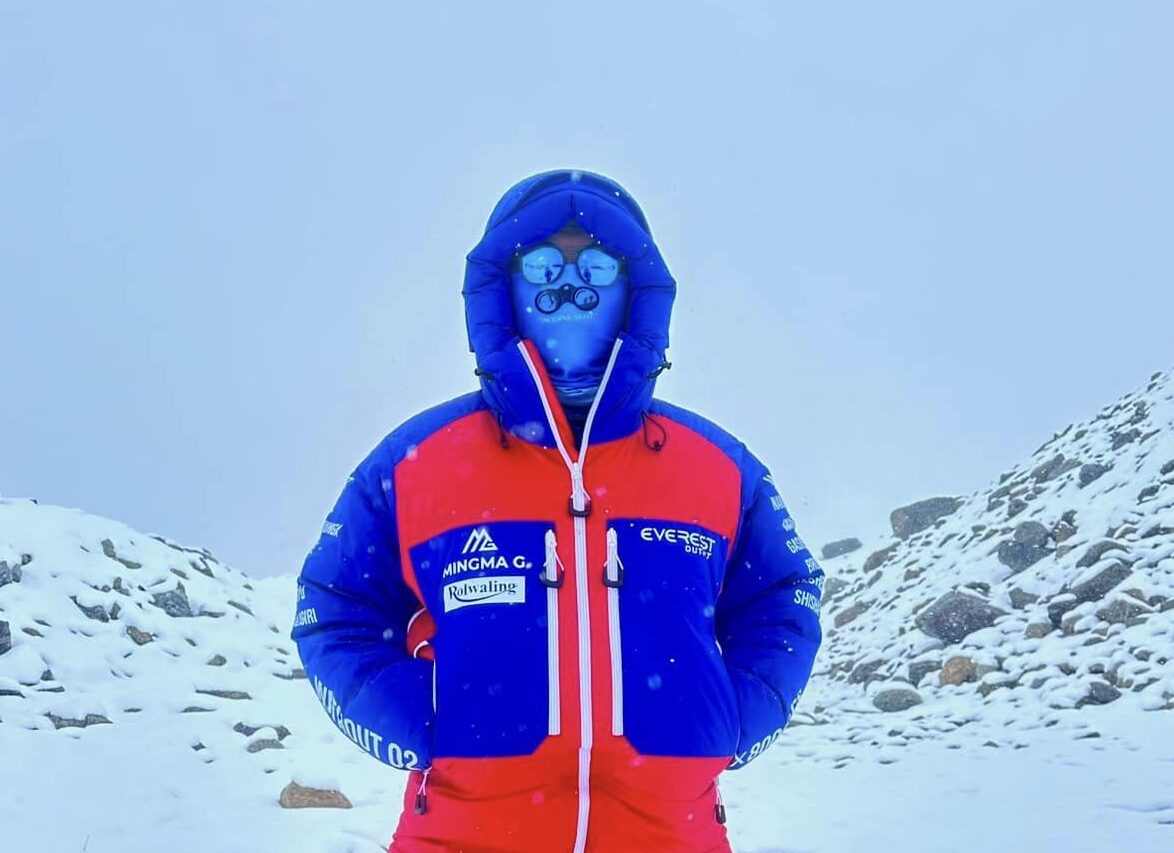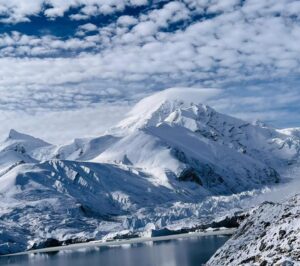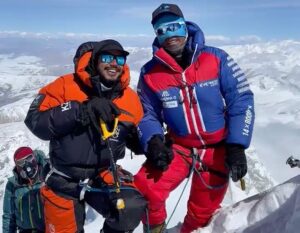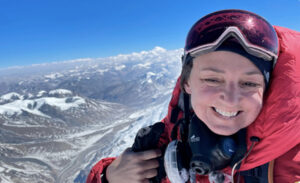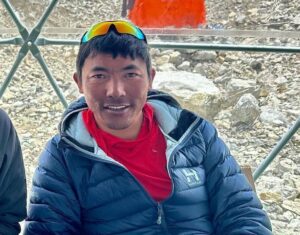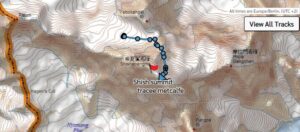It’s happening again. At least one of the four teams currently on Shisha Pangma is launching a summit push tonight in potentially risky conditions.
We have confirmed that Mingma G is heading for the summit. Meanwhile, the Seven Summit Treks climbers who are now in Camp 2 will return to Base Camp tomorrow.
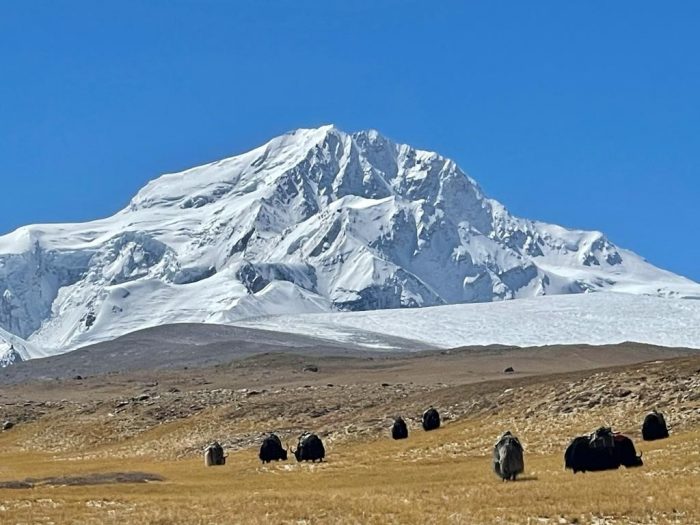
Shisha Pangma from the Tibetan plains. Photo: Sasko Kedev
Early start
“Our team is at our high camp, which is at just over 7,000m (23,000 ft),” Tracee Metcalfe of the U.S. texted today via InReach. “We will start 2 am tomorrow, but I would love to start it now!!”
Other sources have confirmed that team leader Mingma G is setting off between 2 am and 4 am Chinese time (GMT+8). Barring a last-minute change of mind, the team will begin climbing shortly after this story posts.
Some of the Seven Summit Treks teams are currently in Camp 2 at around 6,800m on a preparatory rotation. All will retreat to Base Camp tomorrow. Mario Vielmo’s home team confirmed the Italian climber is also going down, as forecasts predict high winds for the next few days.
“He will launch the summit push as soon as conditions improve, hopefully before October 10,” Vielmo’s home team told ExplorersWeb.
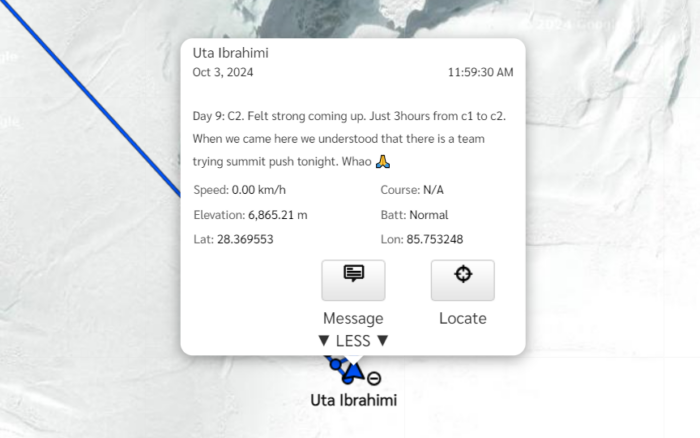
Text sent via InReach by Uta Ibrahimi of Albania-Kosovo from Camp 2 on Shisha Pangma.
Adriana Brownlee’s tracker located her in Camp 2 as well. Dorota Samocko was in Camp 2 this morning but then retreated to Camp 1 at 6,350m. Shehroze Kashif of Pakistan remains in Advanced Base Camp at 5,600m, patiently waiting for the right conditions.
We have asked the other teams on the mountain, including Climbalaya (with Dawa Yangzum Sherpa) and Nirmal Purja’s group, about their plans. We are awaiting a reply.
A dangerous gamble: Ralf Dujmovits
“It’s a deja-vue,” the German 14×8,000m summiter posted Wednesday on social media. “I’m more than a bit concerned about the safety of the climbers when they go above Camp 3 and especially above 7,700m.”
Weather and snow conditions are similar, if not worse, than the ones that caused the death of four people last year. Here is Dujmovits’ explanation:
From the middle of last week until Sunday, one to two meters of new snow fell on Shisha Pangma during the same weather event which brought Nepal some of its worst flooding in decades. During the recent snowstorm, winds from the south — as is usual at this time of the year — transported millions of additional tons of fresh snow from the South Face of Shishapangma onto the northeast-facing slopes of the normal route (i.e. where all of this year’s ascents take place).
The snow crystals become rounded during wind transportation and do not bond well to each other or to the surface of the old snow. The snow will bond eventually, but it can take many days or even weeks in the cold temperatures on this face, which receives little direct sunshine at this time of year. With the forecasted increase in wind speed, the avalanche situation will become even worse with the formation of dangerous wind slabs.
Variations matter
The key question is which of the many variation routes Mingma G and his team will take. In Dujmovits’ opinion, the shortcut from a rock gendarme at around 7,700m toward the main summit of Shisha Pangma (the dashed red line in Dujmovits’ Instagram photo above) “is an absolute NO-GO for the next many days.”
In theory, it could be safer to use the traditional route of ascent via the summit ridge. Climbers could then follow it all the way across the central summit to the main summit.
“However, there are many spots above Camp 3 where small pockets of dangerous snow could fail under the weight of climbers,” Dujmovits notes.
Also, the ridge is long, sharp and technical: “Not very user-friendly for large guided groups and inexperienced climbers,” Dujmovits adds.
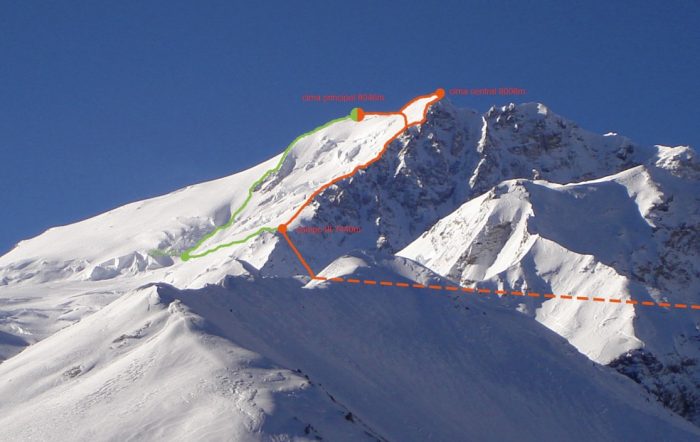
Variation routes to the summit of Shisha Pangma. The routes in red include the ridge and the central summit. The green route is Ocha de Olza’s variation. Photo: Inaki Ochoa de Olza. Topo: Edurne Pasaban
Overall, Dujmovits believes that Shishapangma’s normal route should not be attempted in autumn after a heavy snowfall. The route is icier but safer in spring.
Why the hurry?
Many of the climbers currently on the mountain only have Shisha Pangma left to complete their 14×8,000m list. For most of them, there is some kind of record at stake: the youngest, the fastest, or the first national.
Recently, both Nirmal Purja and Mingma G (Mingma Gyalje) Sherpa announced they would climb the mountain without oxygen, despite the strict regulations set by the China-Tibet Mountaineering Association (CTMA). The organization forbids no-O2 climbs above 7,000m. Both Purja and Mingma G have only Shisha Pangma left to complete their no-oxygen quest.
No Nepali has ever climbed all the 8,000m peaks without supplementary oxygen, so to ignore the new rules is tempting.
“I’ll do it for Nepal,” Mingma G wrote. He told ExplorersWeb that he trusted the CTMA would give him a pass. Purja does not currently hold Nepalese citizenship (he has a UK passport), but he was born in Nepal. In his posts, he states that he wants to complete the no-O2 14×8,000’ers in record time. Asked by ExplorersWeb about the CTMA regulations, his public relations team replied: “Nims has all the required permissions from the relevant authorities for this exped.”
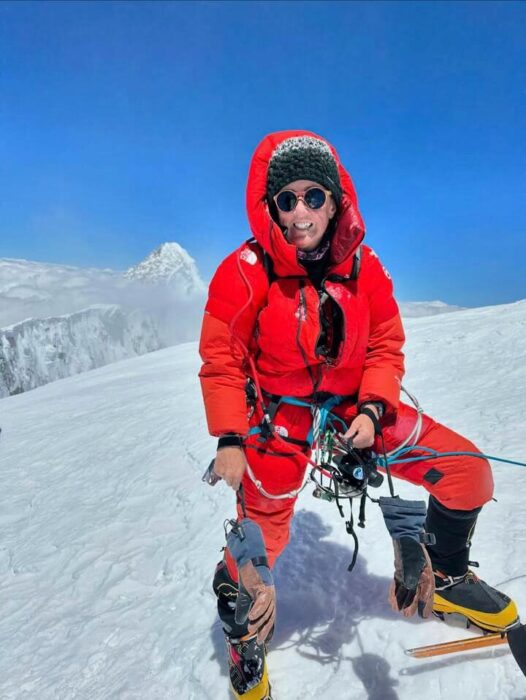
Tracee Metcalfe on the summit of Broad Peak this past summer. Photo: Tracee Metcalfe
Expedition leaders or reckless competitors?
Yet both Purja and Mingma G are expedition leaders, first of all, with clients for whom they are responsible. Purja has not shared who is with him on Shisha Pangma, but Mingma G has a team that includes other record-seekers. Sirbaz Khan of Pakistan hopes to become the first in his country to complete the 14×8,000’ers. So does Shehroze Kashif, although his latest post does not mention becoming the first. He simply says he is doing it to complete a life project.
Likewise Tracee Metcalfe: If she summits, she would become the first U.S. woman to climb all 14 8,000m peaks. For some, that’s a big deal: It drove the intense competition between Gina Rzucidlo and Anna Gutu that led to their deaths in two separate avalanches last fall. But in an interview before leaving, Metcalfe told ExplorersWeb that she just wanted to finish the quest and then return to her work as a physician.
